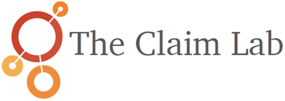November 2022 – The Cost of Ignoring Psychosocial
The Psychosocial influencers on a claim have always been rather esoteric, hard to quantify, down to the claim adjusters judgement and feelings… So how can we possibly assign a cost to this abstract concept.
Let’s look at this in more detail….
As we accumulate more psychosocial data, we can study the effect of these psychosocial influencers on claims by comparing the duration of claims that have no complicating psychosocial factors to those which do.

When new claims come in, we capture these key indicators and score them on a repeatable scale. Then, as the claims move through their life-cycle, we can look back at the profile of the claims from the very start of the process. We look for the indicators predicting which claims are complex.
We have been hearing for years that best-practice in claims management is to avoid ‘over-medicalising’ a claim. In other words, we don’t manage the claim based on the injury alone and what the guidelines might say about that medical condition. Instead, we try to assess the whole person.
The difference is now that we have a scale which we can use to assess each individual, and quantify those non-medical, psychosocial factors and determine their influence on the likely duration of a claim.
Is this ‘rocket science’?…. No not really (thankfully as NASA are pretty busy at the moment…). It is all about having previous digitized and robust information and applying some data science too.
Let us give you an example:
It is hard for some people to talk about mental health issues, particularly in the workplace, it’s not always easy to say you are depressed or anxious, (and maybe this perspective is changing). We regularly see claims questionnaire data where individuals have underlying previously unreported mental health conditions, that are not part of the medical diagnosis.
They may have gone off work with a Rotator-Cuff injury, but there might also be an underlying mental health condition.
This will mean that they will take longer to get back to work, maybe adding an extra 25% to the claim duration, if nothing is done to help…
For one insurer (with 1000 open lost time claims) we have calculated that this particular psychosocial factor alone accounts for 20,000 days per year of extra benefit payments. This was before we looked at the other factors such as, workplace, motivation, domestic…. and so forth.
So, we can now quantify the cost of not addressing the ‘whole person’, and we can see those complications at the very start of the claims process and recommend earlier action with the necessary interventions.
We all know that this is the right approach, not just for better managing the limited resources of the insurance provider, but also more importantly, helping individuals get back to work, and rejoining society in gainful employment….
Work is healthy!
